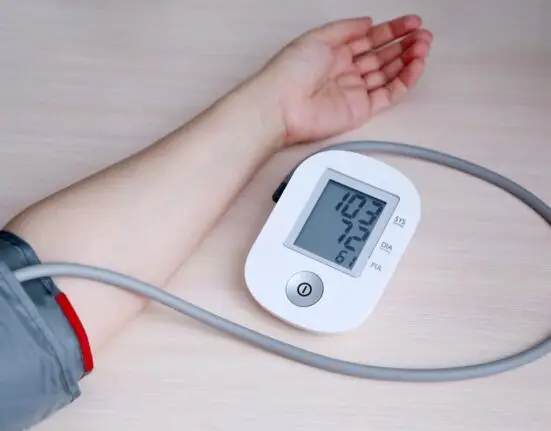Introduction
Tear gas, despite its misleading name, is not actually a gas but a mixture of chemicals dispersed in aerosol form. It is widely used for crowd control and self-defense, with common types including CS gas, pepper spray, CR gas, and CN gas. These chemical agents cause significant discomfort and irritation to the skin, eyes, and respiratory system. Understanding how tear gas works, its effects on the human body, and appropriate precautions can help mitigate its impact and ensure safety in situations where exposure might occur.
1.What is tear gas?
Despite the name, tear gas is not a gas. Its chemicals are solids, not gases, but can be dispersed as aerosols in pyrotechnic mixtures that disperse the chemicals during detonation or in solutions delivered as sprays. It is a pressurized powder that produces a mist when ejected. The most commonly used form of tear gas is CS gas. Common types of tear gas include pepper spray, CR gas, and CN gas. This gas is a combination of chemicals that cause skin, respiratory and eye irritation. This is usually done with canisters, grenades, or pressurized sprays.
2.Effects of tear gas on the human body
Exposure to tear gas can cause chest tightness, coughing, suffocation, wheezing and difficulty breathing, in addition to irritation of the eyes, mouth and nose. Blurred vision and difficulty swallowing may occur. This gas can also cause chemical burns, allergic reactions and respiratory problems. People with pre-existing respiratory conditions, such as asthma and COPD, are at increased risk of developing severe symptoms that can lead to shortness of breath. If you have these symptoms, contact a doctor immediately to avoid further infection. If exposed to large amounts of tear gas for long periods of time or in an enclosed space. So it can have more permanent health effects. In these cases, it can cause respiratory arrest and even death.
3.How does tear gas work?
These chemicals react with sensory nerve receptors that can cause skin, eye pain and discomfort. They work quickly, but the irritation they cause usually heals within thirty minutes to a few hours.
4.Symptoms of Side Effects of Tear Gas
Most people recover from the harmful effects of this gas without any significant symptoms. Symptoms of the harmful effects of this gas can be as follows.
4.1 Eye symptoms
Immediately after exposure to tear gas, you may experience the following eye symptoms such as involuntary eyelid closure, itching, burning, temporary blindness, blurred vision, chemical burns, hemorrhage, nerve damage, Respiratory and gastrointestinal symptoms. Click here to contact an Ophthalmologist for any eye related problems. Breathing in this gas can irritate your nose, throat and lungs. People with pre-existing respiratory disease are at higher risk of developing severe symptoms such as shortness of breath. In case of severe symptoms like shortness of breath, consult a qualified specialist here. Respiratory and gastrointestinal symptoms may include choking, irritation and itching of the nose and throat, difficulty breathing, cough, chest tightness, nausea, vomiting, diarrhea, shortness of breath.
It is important to seek immediate medical attention for guidance on the proper treatment of any appearance of vomiting. Click here to consult a gastroenterologist in this regard.In severe cases, prolonged exposure to tear gas or exposure to tear gas in confined spaces or for prolonged periods of time can lead to death.
4.2 Skin symptoms
When tear gas comes into direct contact with the skin, it can cause irritation and pain. Burning can last for days in severe cases. Some symptoms can be like itchy skin, redness, blisters, allergic dermatitis. Click here to consult a specialist in case of allergic dermatitis.
5.Other symptoms
The effects of this gas can cause an increase in heart rate or blood pressure. In people with pre-existing heart disease, it can lead to heart attack or death. Being hit by a tear gas canister can cause traumatic injury. Research shows that the effects of CS gas can increase the risk of miscarriage or birth defects. If you too have suffered from the effects of tear gas during pregnancy, click here to consult an expert and reliable gynecologist.
6.Precautions against tear gas and other chemical agents
A scarf or handkerchief large enough to cover your face from nose to chin may work best. Wear eye protection from chemical fumes such as sunglasses, swimming goggles, or a gas mask. Cover as much of your skin as possible. Wear comfortable, closed, safety shoes that you can walk in. Avoid using contact lenses or over makeup. Carry water bottles, inhalers, clothes and other necessary items with you.
Conclusion:
While tear gas can be an effective tool for controlling crowds or providing personal defense, its effects on human health can be severe, especially for those with pre-existing conditions or in cases of prolonged exposure. The symptoms range from temporary discomfort to serious health complications. Taking preventive measures such as wearing protective clothing, avoiding contact lenses, and carrying essential items can reduce the risk of adverse effects. If exposed, prompt medical attention is crucial to address any severe symptoms and avoid long-term health consequences.





Leave feedback about this